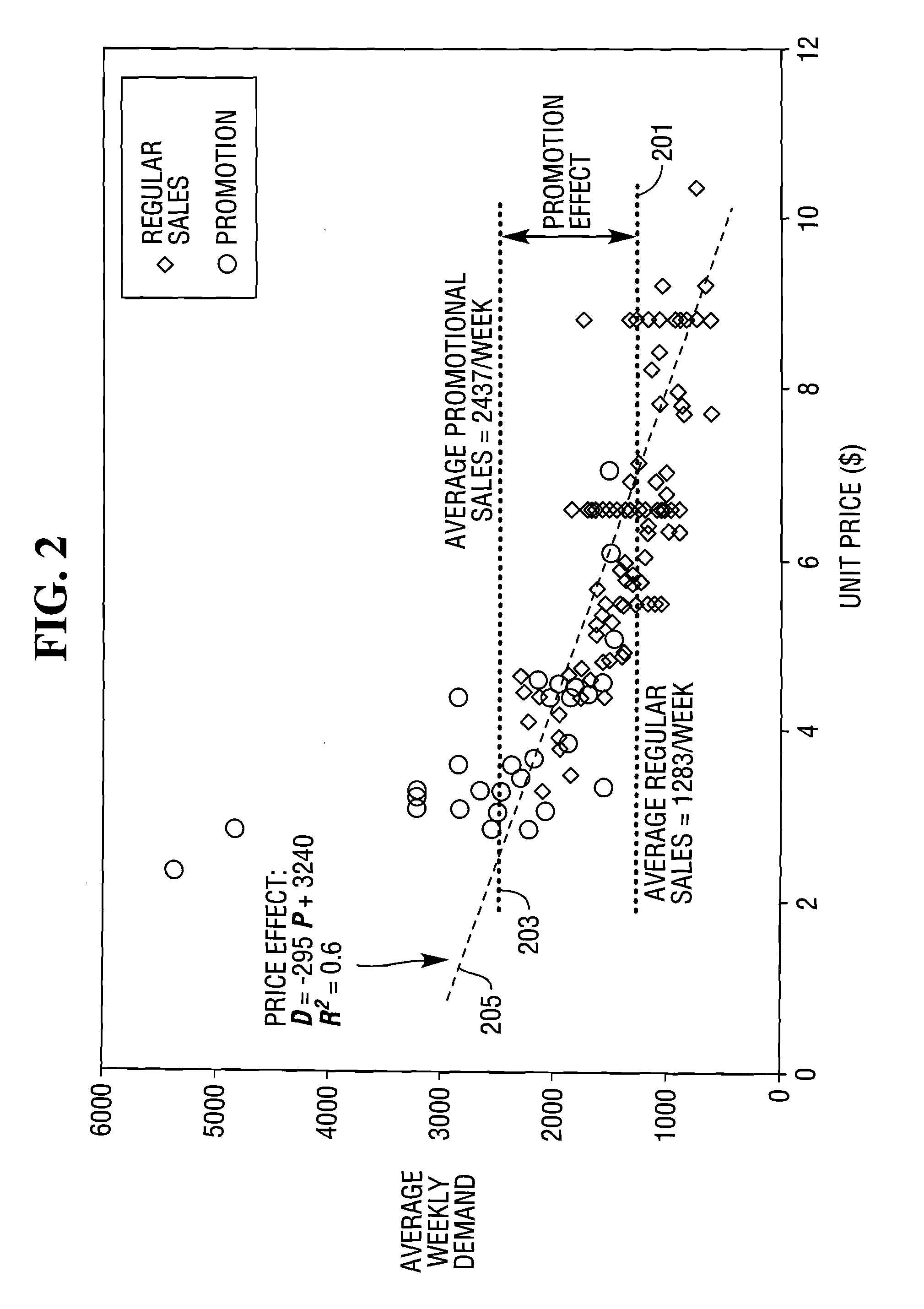Methods and systems for forecasting product demand using a causal methodology
a causal methodology and product demand technology, applied in the field of methods and systems for forecasting product demand, can solve the problems of loss of sales and revenues for organizations, adversely affecting the profits of organizations, and loss of goods
- Summary
- Abstract
- Description
- Claims
- Application Information
AI Technical Summary
Problems solved by technology
Method used
Image
Examples
Embodiment Construction
[0018]In the following description, reference is made to the accompanying drawings that form a part hereof, and in which is shown by way of illustration specific embodiments in which the invention may be practiced. These embodiments are described in sufficient detail to enable one of ordinary skill in the art to practice the invention, and it is to be understood that other embodiments may be utilized and that structural, logical, optical, and electrical changes may be made without departing from the scope of the present invention. The following description is, therefore, not to be taken in a limited sense, and the scope of the present invention is defined by the appended claims.
[0019]The Teradata Demand Chain Management suites of products, as discussed above, models historical sales data to forecast future demand of products. The method currently employed consists of seasonal adjustment of the historical sales patterns and extrapolation of demand using exponential moving average. Th...
PUM
 Login to View More
Login to View More Abstract
Description
Claims
Application Information
 Login to View More
Login to View More - R&D
- Intellectual Property
- Life Sciences
- Materials
- Tech Scout
- Unparalleled Data Quality
- Higher Quality Content
- 60% Fewer Hallucinations
Browse by: Latest US Patents, China's latest patents, Technical Efficacy Thesaurus, Application Domain, Technology Topic, Popular Technical Reports.
© 2025 PatSnap. All rights reserved.Legal|Privacy policy|Modern Slavery Act Transparency Statement|Sitemap|About US| Contact US: help@patsnap.com



